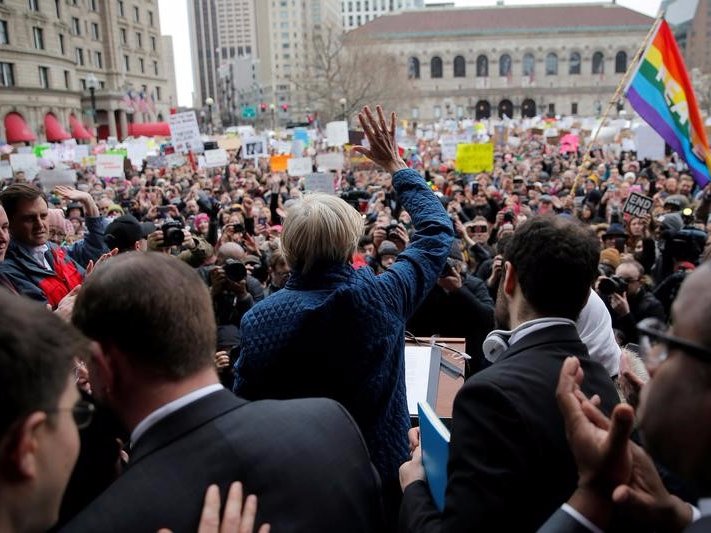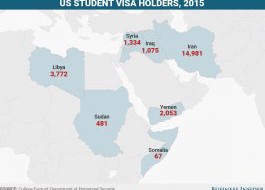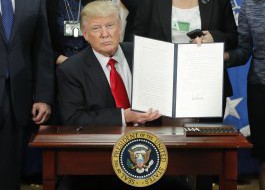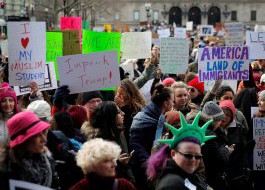
Last week, President Donald Trump signed an executive order that bars citizens of Iran, Iraq, Libya, Somalia, Sudan, Syria, and Yemen from entering the US for 90 days and all refugees for 120 days. Opponents of the ban worry that the temporary travel ban will turn into a permanent one.
Around the nation, news has emerged of college students from the affected countries not being able to get back into the US.
Aside from the personal hardship the ban has been seen to cause, it may also have a big effect on the bottom line at certain American colleges, according to estimates provided to Business Insider from College Factual, a higher education data analytics and research company.
International students can pay up to three times more than in-state students at public universities, Business Insider's Tanza Loudenback reported in September, citing data from SelfScore, a company providing financial services to international students. Foreign students effectively subsidize education costs for other students at schools where they pay more, taking some of the financial burden off of American students.
College Factual collected data from Department of Homeland Security on the number of student visas that were approved in 2015, the most recent year they were able to get information. The 10 universities that had the highest number of student visas from the seven countries which now have a temporary travel ban are:
To estimate the potential yearly revenue loss of these figures, College Factual used the tuition and fees and room and board cost for bachelor's degree programs at each of these schools. The schools that stand to lose the most revenue assuming these students have their visas revoked are:
University of Southern California — $16.9 million Northeastern University — $15.6 million Texas A&M University — $11.5 million The Pennsylvania State University — $11.1 million University of Central Florida — $8.6 million Virginia Polytechnic Institute and State University — $8.2 million Arizona State University — $8.2 million University of Houston-System — $7.9 million The University of Texas at Arlington — $7.3 million Kaplan International Centers — $4.3 millionThese estimates assume all students are seeking bachelor's degrees, as the visa data was not able to split between those seeking bachelor's degrees and those seeking master's or doctoral degrees.
Of note: Texas institutions of higher education seem to be most susceptible to revenue loss if Trump's immigration ban becomes permanent, with Texas A&M, the University of Houston System, and the University of Texas at Arlington losing an estimated $26.7 million combined.
Amy Smith, senior vice president and chief marketing officer at Texas A&M, said that while the school has not conducted an impact analysis, she thought the numbers were likely inflated as some of its doctoral students attend the school on scholarship. Smith also said that the school doesn't support the ban. "We would not be the university we are without a diverse student body," Smith said.
Some experts warn that the effect on foreign enrollment in US schools could be far greater than just adjusting for the seven banned countries.
"The domino effect of this ban will result in a precipitous decline in international student enrollment from Muslim-majority countries," Rahul Choudaha, cofounder of international student support organization interEDGE, told Business Insider in an email.




